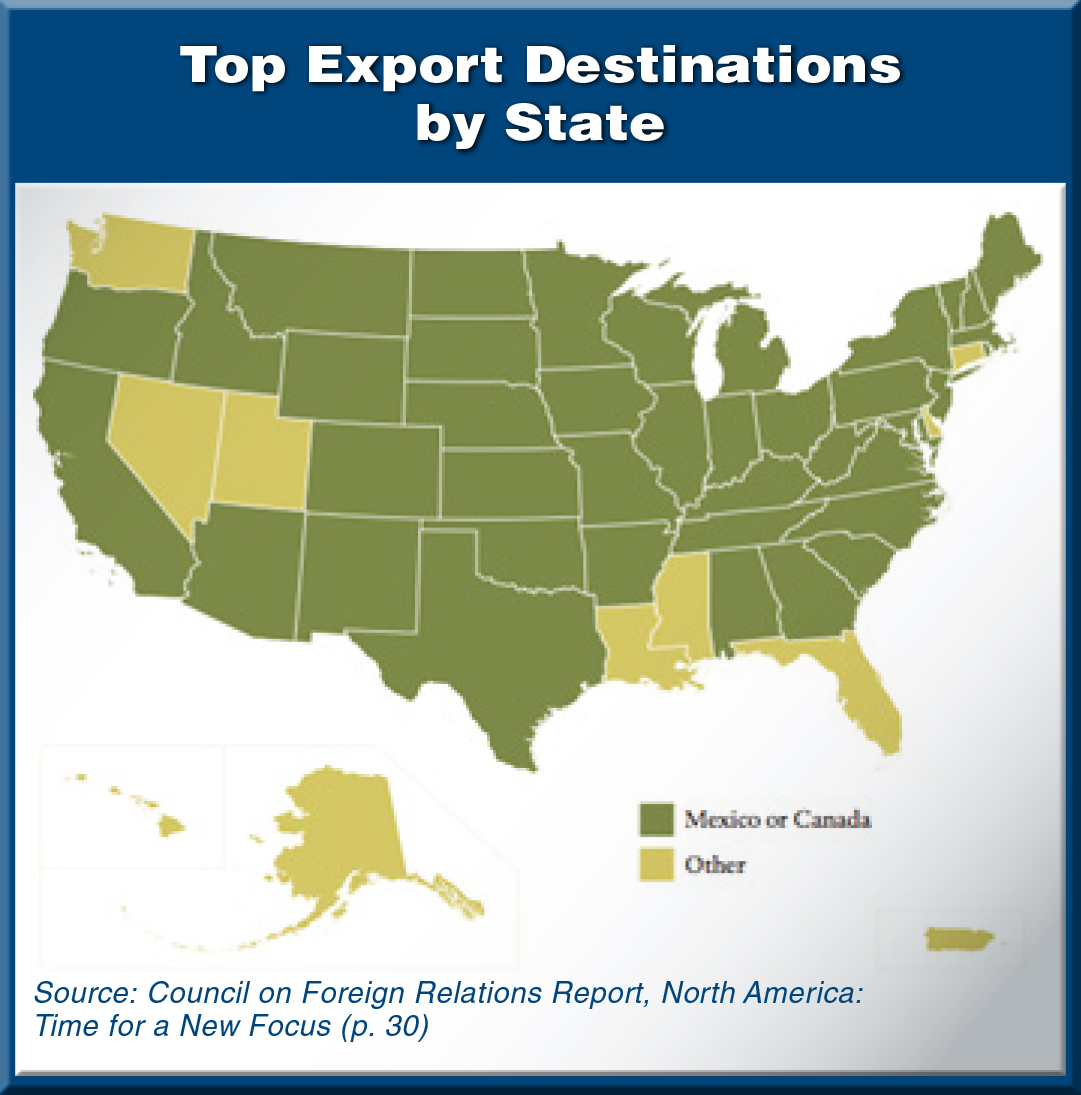GUEST EDITORIAL
By Jeffrey
Phillips
Managing Director
Dawson
Strategic
This article was published in the August 2015 edition of NTEA
News.
The idea of putting North America at the forefront of both Canadian and
American commercial policy is here to stay. The argument is simple: the United
States, Mexico and Canada stand to benefit by strengthening the trilateral
relationship they share. North American economic integration needs to deepen in
order for everyone in the region to more effectively compete
globally.
The countries are already each other’s closest economic partners. A
recent Canadian Senate Committee report notes the collective trade relationship
is valued at more than $1.4 trillion, and North America’s economic output
accounts for more than a quarter of global gross domestic product. Since NAFTA
was implemented in 1994, trade has increased 265% and investment has grown
six-fold among the three countries.
It is easy for some to underestimate the importance of Mexico and
Canada to the U.S. economy, but keep in mind the U.S. exports nearly five times
as much to Mexico and Canada as to China. In fact, for every dollar the U.S.
spends on products from Canada and Mexico, it is buying 32 cents worth of U.S.
content. Research by Peter Dixon and Maureen Rimmer shows trade with Canada
alone supports 8.27 million — or 4.54 percent — of U.S. jobs
(2013).
The chart below, from a 2014 Council on Foreign Relations report, is a
powerful visual of the reality of North American trade for U.S. states. It makes
a compelling case for why North America should form the continental base for
U.S. global policy through an examination of energy, economic competitiveness,
security and community in the region.

A June 2015 report by General (ret.) David Petraeus and Paras Bhayani
examines the dynamics of four interlocking revolutions taking place in North
American energy, manufacturing, life sciences and information technology
markets. These sectors, argue the authors, have the potential to make North
America “the next great emerging market.”
These ideas are gaining traction. All three governments are examining
the issue prior to the proposed North American Leaders’ Summit (dates to be
announced). In June 2015, Canada’s House of Commons and Senate released reports
calling for a strengthened North American community. Report titles indicate
North America has yet to reach its full potential: North American Neighbours:
Maximizing Opportunities and Strengthening Cooperation for a More Prosperous
Future and North America: Giving the Continent the Attention it
Deserves.
Barriers and
solutions
A key challenge in advancing North American
integration involves NAFTA, the primary framework that has driven trade and
investment integration for more than 20 years. According to a study by Laura
Dawson, Christopher Sands and Duncan Wood, NAFTA is now “a senior citizen
amongst trade agreements, and the trilateral experiment is at a
crossroads.”
While still responsible for the governance of most North American
trade, the deal was negotiated before concepts like electronic commerce, digital
delivery of services and third-party logistics became everyday aspects of
commercial transactions. In this respect, the Trans-Pacific Partnership, of
which all three countries are members, provides an opportunity to upgrade and
update NAFTA.
In terms of the practical steps for advancing the North American bloc
to compete more effectively globally, the 2013 San Diego Agenda report notes all
three countries would benefit from common inspection processes and standards on
products produced in North America, increased investment in physical
infrastructure that connects the three economies, aligned energy policies, and
reduced barriers to labor mobility.
A 2014 report by the Canadian Council of Chief Executives contains a
44-point action plan to “sharpen North America’s competitive edge,” covering
everything from supply chains and border management, to energy and regulatory
cooperation. In short, we know what needs to be done.
The magic formula is a bold, long-term political vision combined with
diligent attention to supply-chain cost reduction. This will strengthen the
North American community and enhance competitiveness. Investing in a shared
future is an idea that needs to come to fruition.
In 2014, the size of the U.S. work truck industry was greater than $120
billion. This is an important sector for not only the U.S. economy but the North
American market as a whole. With offices in Washington and Ontario, and
headquarters outside of Detroit, NTEA has strategically positioned itself to
reflect the work truck industry’s importance in North America. The Association
will continue to advocate for trade and regulatory policies that help strengthen
the industry’s ability to operate successfully and profitably throughout the
region.

Dawson Strategic is a policy research and consulting company
focusing on cross-border trade, economic and border issues. With offices in
Ottawa and Toronto, the firm provides strategic analysis and guides advocacy
activities as related to the Association’s government relations office in
Canada.